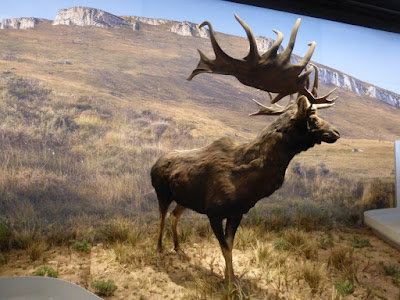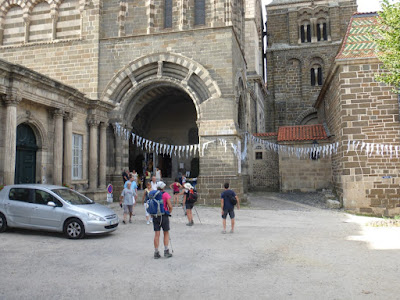In 1994, French spelunkers found a hidden cave in the Ardeche gorges, near the Pont D'Arc, an enormous limestone natural bridge. Subsequent exploration of the cave revealed the greatest of all paleolithic cave art yet discovered, exceeding Lascaux and others in the number and variety of "works" found, animals depicted (some now extinct), and certainly in the artistic quality of the paintings. As Picasso said of Lascaux, "we have learned nothing." The Caverne Pont D'Arc, however, is
twice the age of Lascaux, authoritatively dated now to 36,000 years ago. It is all utterly amazing and something we have been wanting to see since it opened in 2015. But wait. You don't get to see the cave itself, which is now closed to all but scientists, archaeologists, art historians, et al. Instead you get to see the Caverne Pont D'Arc replica, similar to those at Lascaux and at Altamira in Spain. Non-specialists will never see Pont D'Arc--to see it in any numbers is to destroy it, as at Lascaux--but we can see this new replica, put together at great expense and labor and utilizing all the 3-D, computer, and other technologies now available. The Smithsonian has a very good article at
http://www.smithsonianmag.com/history/france-chauvet-cave-makes-grand-debut-180954582/, and, of course, the French have their own extensive website at
http://archeologie.culture.fr/chauvet/en/. The latter has a virtual tour of the real cave that is well worth the trouble of finding and manipulating. (The final hall is where the most impressive work can be found). It is all mind-blowing. Unfortunately, there is a no fotos policy in the replica, so most of the pix I can share are from the general area, outside, the museum, and so forth.
 |
| Entrance to the replica complex |
 |
The museum has life-sized models of the animals, etc; the
French excel in dioramas; here, a wooly mastodon |
 |
| As depicted in the cave...there are many better representations |
 |
| Thus, a rhinoceros; common in Europe at the time |
 |
| Giant elk we have seen before |
 |
| Humans; dad is saying "OK, that's enough screen time for today" |
 |
| More pix of pix from the cave |
 |
Extensive use of relief, even preparation of the walls for
painting |
 |
| Lions, tigers, and bears, oh my! |
 |
| One of the more compelling images...36,000 years ago |
 |
| Approaching the replica building |
 |
| A singular building for its singular contents...even replicas |
 |
| Inside |
 |
| Just before entering the cave |
 |
| In the restaurant/snack bar |
































































